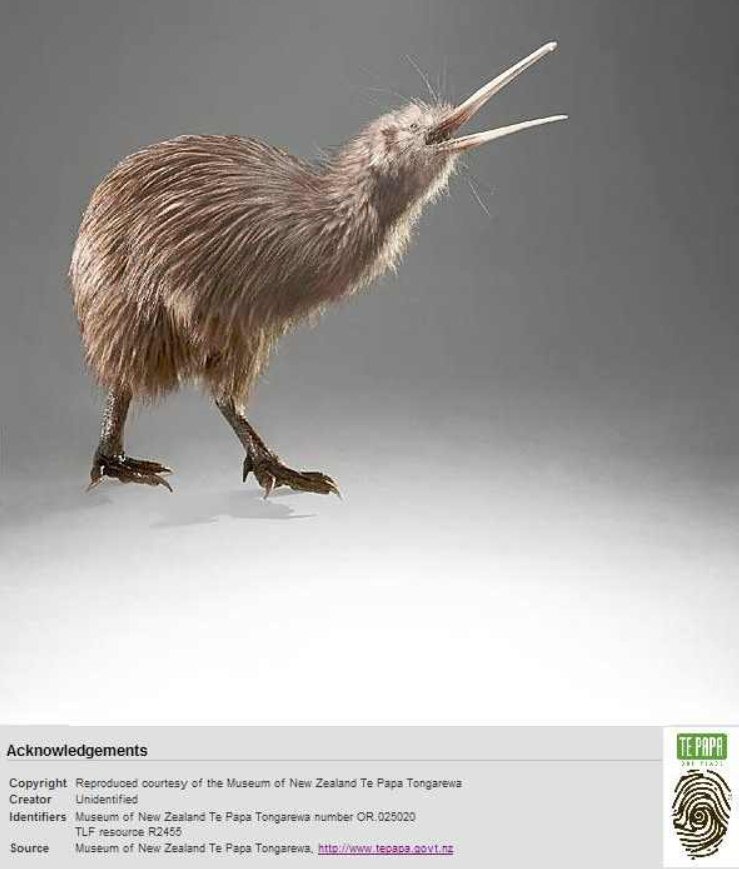Kiwi

VulcanSpirit
Richard & Alison Brunstrom
Tue 19 Feb 2013 10:14
|
We've been camping in the Far North for a week, and
we've seen a live kiwi - which most native New Zealanders have not!
The kiwi is the national bird of New Zealand. There
are actually five species currently recognised, all very similar. They are
related to the African ostriches, Australian emus and South American rheas, all
having evolved on the Gondwana supercontinent before it broke up 70 million
years ago. But the history of the kiwi since then is rather obscure; the oldest
known fossil is only 1m years old, and most of the current species seem to have
diverged from each other during the Pleistocene (2.5 million to 11 000 years
ago).
It certainly is an odd looking bird:
 As you can see, this is a stuffed museum specimen.
It is very difficult and rather unfair to photograph kiwi in the wild as
they are completely nocturnal and really hate white light from flashguns. So you
have to go creeping about in likely habitat at night with a red
torch. These birds are very unusual in lots of ways: they are the only
birds with nostrils at the tip of their beaks, they have bone marrow like a
mammal, their body temperature is closer to a mammal than a 'normal' bird, they
have no breastbone (though they do retain really tiny, useless, wings). And
perhaps oddest of all is their egg. Just look at this skeleton:
This is the largest egg relative to body size of
any bird. It's hard to see how the female kiwi finds room for all her internal
organs when she has this thing inside her!
We saw a Northern Brown Kiwi, Apteryx
mantelli (species names are changing rapidly at present as DNA gives
new clarity to kiwi phylogeny), in a forest reserve. It is the commonest species
with about 15 000 individuals remaining (there must have been literally
millions before humans arrived here). It chose to cross the path right in front
of us and then stayed close-by, rooting around exactly like a hedgehog, for
several minutes. Fantastic.
All kiwi species are threatened by habitat loss and
introduced predators - they have no defence, having evolved in a world with no
predators at all. At present something like 90% of kiwi chicks are killed by
stoats within three weeks of leaving the nest burrow, and there is a record of a
single domestic dog killing 500 kiwi in six months in the 1980s (dogs are now
banned in kiwi areas).
Kiwi population counts are done by call. The male
kiwi has a whistling shriek, repeated 15-25 times, which can carry 2km on a
still night. You have to make sure that you've counted the shrieks because there
are several bird mimics active at night - but luckily they get bored before
they reach 15 repeats, so you can separate the true kiwis from the
imposters.
|